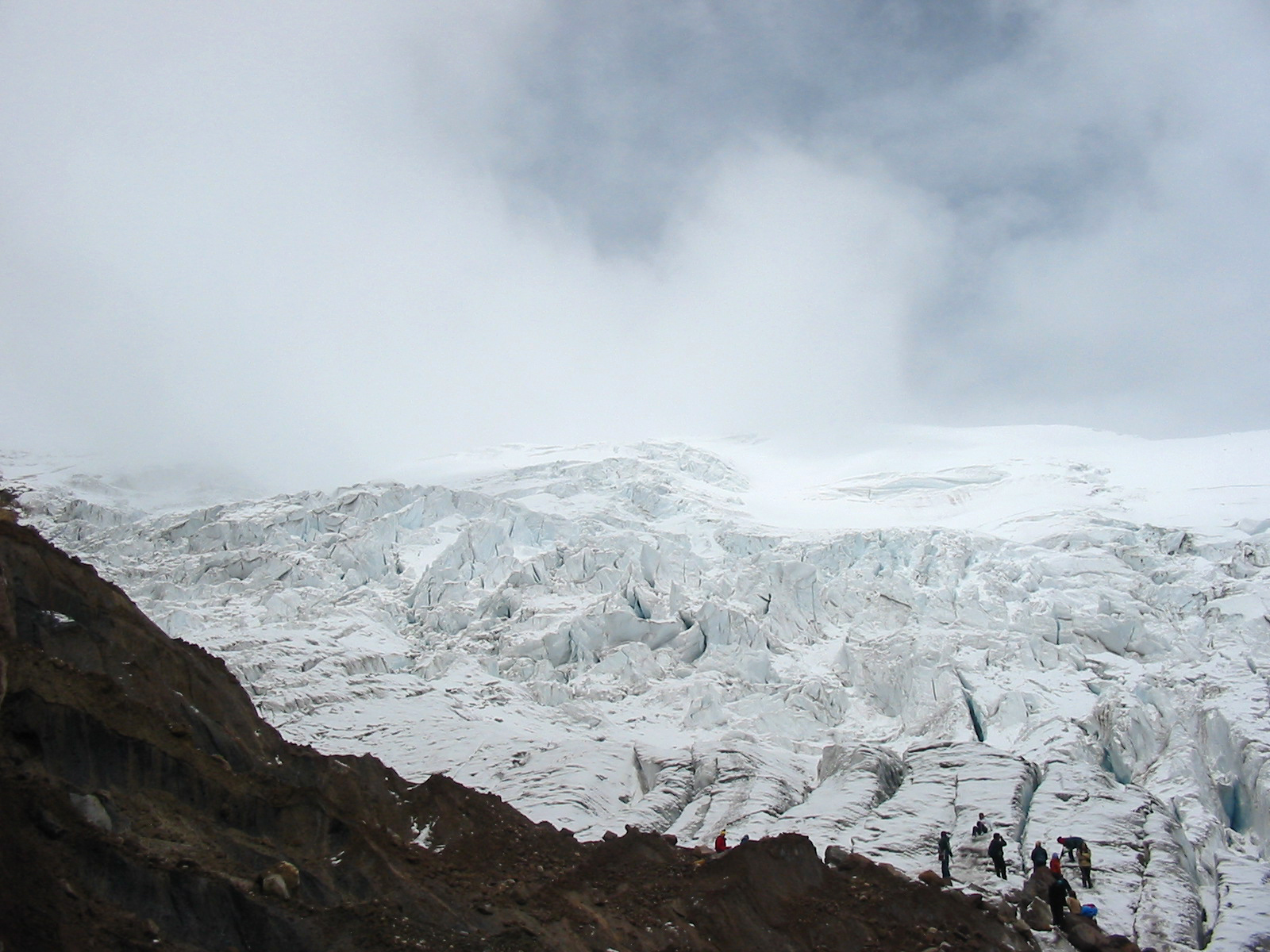Cayambe (volcano) on:
[Wikipedia]
[Google]
[Amazon]
Cayambe or Volcán Cayambe is a 

Cayambe
Instituto Geofísico de la Escuela Politécnica Nacional
Climbing Trip Report
{{Authority control Stratovolcanoes of Ecuador Geography of Pichincha Province Andean Volcanic Belt Complex volcanoes Subduction volcanoes Glaciers of Ecuador Five-thousanders of the Andes
volcano
A volcano is commonly defined as a vent or fissure in the crust of a planetary-mass object, such as Earth, that allows hot lava, volcanic ash, and gases to escape from a magma chamber below the surface.
On Earth, volcanoes are most oft ...
in Ecuador
Ecuador, officially the Republic of Ecuador, is a country in northwestern South America, bordered by Colombia on the north, Peru on the east and south, and the Pacific Ocean on the west. It also includes the Galápagos Province which contain ...
, in the Cordillera Central, a range of the Ecuadorian Andes
The Andes ( ), Andes Mountains or Andean Mountain Range (; ) are the List of longest mountain chains on Earth, longest continental mountain range in the world, forming a continuous highland along the western edge of South America. The range ...
. It is located in Pichincha Province, some northeast of Quito
Quito (; ), officially San Francisco de Quito, is the capital city, capital and second-largest city of Ecuador, with an estimated population of 2.8 million in its metropolitan area. It is also the capital of the province of Pichincha Province, P ...
. It is the third-highest mountain in Ecuador, at an elevation of above sea level.
Cayambe, which has a permanent snow cap, is a Holocene
The Holocene () is the current geologic time scale, geological epoch, beginning approximately 11,700 years ago. It follows the Last Glacial Period, which concluded with the Holocene glacial retreat. The Holocene and the preceding Pleistocene to ...
compound volcano which last erupted in March 1786. At , its south slope is the highest point in the world crossed by the Equator
The equator is the circle of latitude that divides Earth into the Northern Hemisphere, Northern and Southern Hemisphere, Southern Hemispheres of Earth, hemispheres. It is an imaginary line located at 0 degrees latitude, about in circumferen ...
, and the only point on the Equator with snow cover. The ice cap covers an area of about and there are glacier
A glacier (; or ) is a persistent body of dense ice, a form of rock, that is constantly moving downhill under its own weight. A glacier forms where the accumulation of snow exceeds its ablation over many years, often centuries. It acquires ...
s on the eastern flank descending to about , whereas those on the drier western flank reach about . The volcano and most of its slopes are within the Cayambe Coca Ecological Reserve.
Cayambe was first climbed by British adventurer Edward Whymper
Edward Whymper FRSE (27 April 184016 September 1911) was an English mountaineer, explorer, illustrator, and author best known for the first ascent of the Matterhorn in 1865. Four members of his climbing party were killed during the descent. W ...
and his two Italian guides and companions Jean-Antoine Carrel and Louis Carrel in 1880. They made first ascents of most of the volcanoes in Ecuador. Cayambe remains a favorite of mountaineers today. The main route runs through a much-fissured terrain of moderate inclination, and only in its final part does the slope increase to 45°. There is a formidable bergschrund
A bergschrund (from the German for ''mountain cleft''; sometimes abbreviated in English to "schrund") is a crevasse that forms where moving glacier ice separates from the stagnant ice or firn above. It is often a serious obstacle for mountaineer ...
to cross at about . On the final stages, there are many cracks and seracs to be overcome, and there are extensive views from the summit.
Cayambe was considered especially beautiful by Alexander von Humboldt
Friedrich Wilhelm Heinrich Alexander von Humboldt (14 September 1769 – 6 May 1859) was a German polymath, geographer, natural history, naturalist, List of explorers, explorer, and proponent of Romanticism, Romantic philosophy and Romanticism ...
, whose writings in turn inspired Frederic Edwin Church
Frederic Edwin Church (May 4, 1826 – April 7, 1900) was an American landscape painting, landscape painter born in Hartford, Connecticut. He was a central figure in the Hudson River School of American landscape painters, best known for paintin ...
to paint the peak, setting the stage for his painting '' The Heart of the Andes.''
Cayambe's peak is the point of Earth
Earth is the third planet from the Sun and the only astronomical object known to Planetary habitability, harbor life. This is enabled by Earth being an ocean world, the only one in the Solar System sustaining liquid surface water. Almost all ...
's surface farthest from its axis; thus, it rotates the fastest as Earth spins.

See also
* Lists of volcanoes ** List of volcanoes in EcuadorReferences
Cayambe
Instituto Geofísico de la Escuela Politécnica Nacional
External links
{{Authority control Stratovolcanoes of Ecuador Geography of Pichincha Province Andean Volcanic Belt Complex volcanoes Subduction volcanoes Glaciers of Ecuador Five-thousanders of the Andes